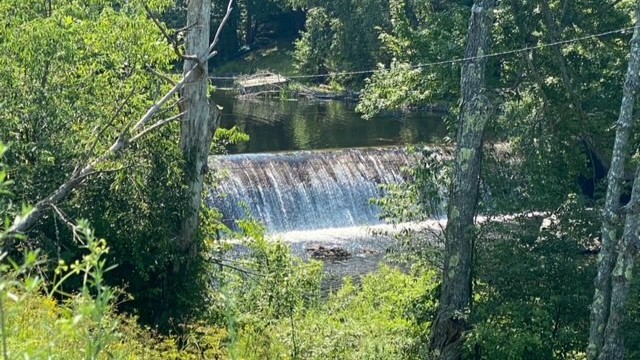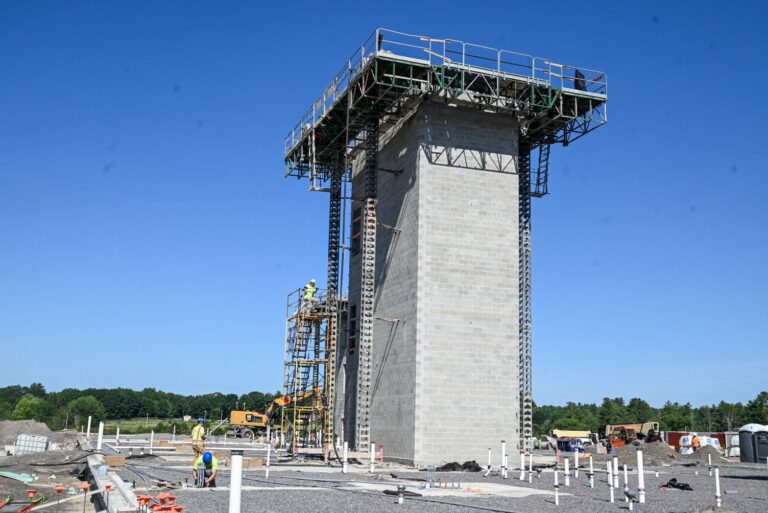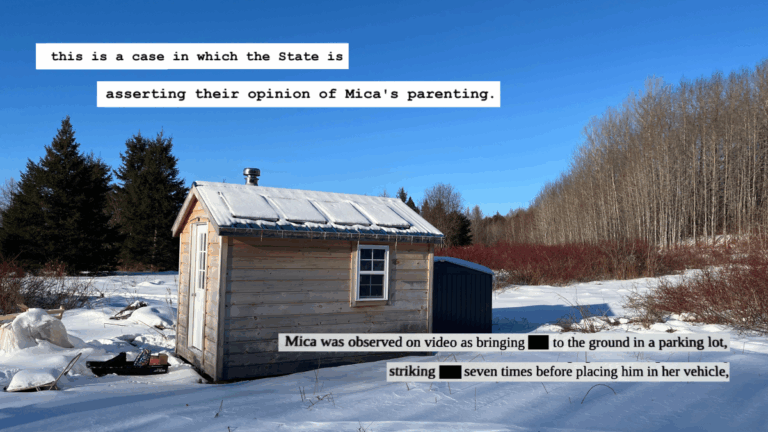State environmental officials on July 30 denied petitions from corporate owners of three Bucksport-area dams to forfeit ownership.
It was the second time within a week that the state Department of Environmental Protection identified deficiencies in the applications from dam owners Bucksport Mill, LLC and parent company AIM Demolition USA LLC, which filed to forfeit their dams on Alamoosook Lake, Silver Lake and Toddy Pond in early July.
The companies’ initial petitions were denied on July 23 for failing to properly describe the location of the dams and failing to notify the required stakeholders. Later that week they submitted some of the supplemental information the DEP requested, but continued notification lapses and missing dam condition reports led to the second denial.
Residents and local officials were shocked when the dam owners announced their forfeiture intentions.
News that the companies were seeking to give up ownership was announced in a public notice in the Bangor Daily News in early July after months of questions on what would happen to the structures, which hold back water on Silver Lake and Alamoosook Lake. Bucksport Mill, a subsidiary of Canadian firm American Iron and Metal, had been looking for an owner for the structures for months.
Critics have said that the companies did not appropriately notify local stakeholders of their petitions and improperly described the state-mandated process of forfeiting a dam, causing unnecessary fear among residents that the dams’ waters would be released far sooner than the legal process permits.
Residents rely on the dams to maintain the artificial water levels in the impoundments that they have built their homes around, waters that also support a U.S. Fish and Wildlife Service fish hatchery and Bucksport’s municipal drinking water supply.
The denial shows that the department is taking AIM’s requests to relinquish the dams seriously, Bucksport Town Manager Susan Lessard told The Maine Monitor. In addition to their importance to the communities, all three are classified as “high” risk, meaning human lives are in danger if the dams fail.
“The petition was deficient in numerous ways and DEP is ensuring that all required information and steps are being supplied and followed,” said Lessard, who is also chair of the citizen board that oversees the DEP.
Both companies now have until Aug. 11 to fully notify local stakeholders and submit reports on the dams’ conditions. Otherwise they will have to restart the process and renotify all residents, municipalities and other local entities.
Neither an AIM official nor attorney listed on AIM’s petition responded to requests for comments.
What happens if the applications are accepted, however, has never been tested. Some are concerned that the way state law is written could leave area residents or municipalities stuck with the dams and all of their operation and maintenance costs.
Uncharted territory
Officials for the state agencies mentioned in the law overseeing dam forfeiture could not recall a time in the law’s more than two-decade history that the process was followed all the way through.
The most recent requests to relinquish dam ownership both came in 2013. One petition was from the owner of a Lincoln County dam on Clary Lake and another from a small pond dam owner in Waldo County. Both petitions were denied, according to DEP Deputy Commissioner David Madore, and neither owner refiled.
The Clary Lake dam was eventually acquired by its namesake’s lake association and the pond dam is privately owned by an individual, according to a federal dam database.
Should a petition be accepted by DEP, a state law from 1995 mandates a 180-day consultation period between the dam owner and neighboring lake associations, residents abutting the dammed waterway, and local and state officials to determine whether someone else may want to assume ownership.
In the case of AIM’s dams, local pond and lake association members say that this part of the process doesn’t provide the information that an interested owner would need to determine the condition of the dam and the costs to operate and maintain it.
Dam owners have to submit recent inspection and maintenance reports to DEP, which AIM has failed to do. But they do not have to provide detailed studies on the long-term future of the dams.
“We have no idea what the conditions the dams are in other than a (Maine Emergency Management Agency) report from 2021,” said Marc Restuccia, chair of the Orland Watershed Committee and a member of the Toddy Pond Association.
“AIM has not released any kind of engineering information, nor any kind of costs of what they’ve done to upkeep it. So we really have a very vague idea.”
There’s also the liability that the new dam owner would assume, requiring steep insurance costs that could be tens of thousands of dollars per year, according to other lake associations Restuccia and Toddy Pond contacted.
If costs prove to be restrictive and a new local owner isn’t found, there’s a review process that tasks three Maine agencies to each take up to 60 days to determine a dam’s maintenance costs and public value. After review, the agency can either take ownership of the dam or notify the next agency to assess the dam. .
The Department of Inland Fisheries and Wildlife is first on that list. According to state law, the department would have to judge the costs of dam maintenance and the value to fisheries and wildlife of either maintaining the dam or releasing its water.
Although the department owns 82 dams, it has never taken over one that has been forfeited under this law.
“In the 26 years that I have been at the department, and in talking with those that have been here longer than I have, (nobody can) recall an instance of us taking ownership of a dam through this process,” said Mark Latti, the department’s director of communications.
Latti said the department would look at the habitat upstream and downstream of the dam; identifying any unique features or species. Then it would consider whether lowering the water level behind the dam would harm that habitat; like leaving loon nests “high and dry.”
If those features would benefit from leaving the dam in place, then the department might take over and maintain water levels. If not, then the Department of Agriculture, Conservation and Forestry does a similar review — this time focusing on public recreation and conservation value.
The Maine Emergency Management Agency takes the last bite of the apple if the other two agencies pass. Unlike DACF and DIFW, however, MEMA doesn’t own any dams, nor does it have specified funds for dam management, officials said.
Nevertheless, as the law is written MEMA could acquire the dam if there is a public safety component that needs to be addressed — like an imminent risk of dam failure.
Only after this review process, if no new owner has been found, could the department order the owner to release the dam’s water in the least-impactful way.
Based on what the dams support on each waterway — like a drinking water supply, community property values, and a fish hatchery — Lessard seemed hopeful that they would be ascribed some sort of public good should the quest for a new owner fail.
Lessard and officials from neighboring Orland, Surry, Penobscot and the lake associations all met earlier this week to coordinate their efforts ensuring that all residents stay apprised of any developments and lowering water levels is ultimately avoided.
Tad Van Leer, president of the Alamoosook Lake Association, left the meeting feeling hopeful under Lessard’s leadership, in spite of the frustration he’s felt with the situation.
“There’s no method of remediation or anything else, and this whole thing has to be solved by the Maine legislature” Van Leer said.
“I’m real comfortable having (Lessard) lead the five towns that are most affected by this. She’s smart. She’s connected. And if anyone can do this, it’s going to be her.”







